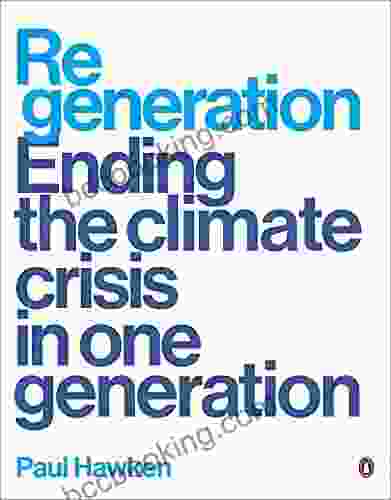The Rise and Fall of an American Icon: The Sears Saga

Sears, Roebuck and Co. was once the largest retailer in the world, a symbol of American ingenuity and consumerism. But in recent years, the company has fallen on hard times, and in 2018, it filed for bankruptcy. What went wrong? How did such an iconic American company come to such a sad end?
5 out of 5
| Language | : | English |
| File size | : | 2500 KB |
| Text-to-Speech | : | Enabled |
| Screen Reader | : | Supported |
| Print length | : | 80 pages |
The story of Sears is a complex one, but it can be boiled down to a few key factors: mismanagement, competition, and changing consumer habits. In this article, we will take a closer look at these factors and discuss how they led to the downfall of Sears.
Mismanagement
One of the biggest problems at Sears was mismanagement. The company made a series of poor decisions over the years, including:
- Expanding too quickly. In the 1980s and 1990s, Sears expanded rapidly, opening new stores and acquiring other companies. However, the company did not always do its due diligence before making these acquisitions, and it often ended up overpaying for businesses that were not a good fit for Sears.
- Failing to invest in its stores. Sears neglected to invest in its stores for many years, and as a result, they became outdated and uninviting. This made it difficult for Sears to compete with newer, more modern retailers.
- Making poor merchandising decisions. Sears made a series of poor merchandising decisions over the years, including discontinuing popular products, markdowns clearance items at a loss, and introducing new private-label brands which failed to gain traction with customers.
These are just a few of the many management missteps that contributed to the downfall of Sears. The company's leaders failed to adapt to changing consumer habits and made a series of poor decisions that ultimately led to its bankruptcy.
Competition
Another major factor in the downfall of Sears was competition. In recent years, Sears has faced increasing competition from a variety of retailers, including big-box stores like Walmart and Target, online retailers like Our Book Library, and specialty stores like Home Depot and Lowe's.
Sears was not able to compete with these retailers on price, selection, or convenience. Walmart and Target offered lower prices on everyday items, Our Book Library had a wider selection of products, and Home Depot and Lowe's had more specialized products for home improvement projects.
Sears tried to compete by offering its own loyalty program, but it was not enough to keep customers coming back. In the end, Sears was simply unable to keep up with the competition.
Changing Consumer Habits
Finally, Sears was also hurt by changing consumer habits. In the past, people were more likely to shop at department stores like Sears for their everyday needs. However, in recent years, consumers have shifted towards shopping at specialty stores and online retailers.
This shift in consumer habits has hurt Sears because it is no longer the one-stop shop that it once was. Consumers can now find better prices, selection, and convenience at other retailers.
Sears has tried to adapt to changing consumer habits by offering online shopping and expanding its selection of products. However, it has not been enough to offset the decline in sales at its brick-and-mortar stores.
The downfall of Sears is a cautionary tale for any business. It shows how mismanagement, competition, and changing consumer habits can all lead to a company's downfall.
Sears was once an American icon, but it failed to adapt to changing times. The company made a series of poor decisions that ultimately led to its bankruptcy.
The rise and fall of Sears is a reminder that even the most successful companies can be brought down by mismanagement, competition, and changing consumer habits.
Image Alt Attributes:
- Sears logo
- Sears store
- Sears shoppers
- Sears bankruptcy
5 out of 5
| Language | : | English |
| File size | : | 2500 KB |
| Text-to-Speech | : | Enabled |
| Screen Reader | : | Supported |
| Print length | : | 80 pages |
Do you want to contribute by writing guest posts on this blog?
Please contact us and send us a resume of previous articles that you have written.
 Book
Book Novel
Novel Page
Page Chapter
Chapter Text
Text Story
Story Genre
Genre Reader
Reader Library
Library Paperback
Paperback E-book
E-book Magazine
Magazine Newspaper
Newspaper Paragraph
Paragraph Sentence
Sentence Bookmark
Bookmark Shelf
Shelf Glossary
Glossary Bibliography
Bibliography Foreword
Foreword Preface
Preface Synopsis
Synopsis Annotation
Annotation Footnote
Footnote Manuscript
Manuscript Scroll
Scroll Codex
Codex Tome
Tome Bestseller
Bestseller Classics
Classics Library card
Library card Narrative
Narrative Biography
Biography Autobiography
Autobiography Memoir
Memoir Reference
Reference Encyclopedia
Encyclopedia Tatsuki Fujimoto
Tatsuki Fujimoto Marie Rutkoski
Marie Rutkoski Subhash Lakhotia
Subhash Lakhotia Terry Tempest Williams
Terry Tempest Williams Who Hq
Who Hq Stanley I Greenspan
Stanley I Greenspan Valerie Mcpherson
Valerie Mcpherson Jim Zub
Jim Zub Leslie Berlin
Leslie Berlin Tom Wilson
Tom Wilson Sierra Wilson
Sierra Wilson Tami Asars
Tami Asars W Sydney Robinson
W Sydney Robinson Lola Glass
Lola Glass Suzanne Slade
Suzanne Slade Tim Clarkson
Tim Clarkson Susan Jane Gilman
Susan Jane Gilman Lawrence Graham
Lawrence Graham Sonia Choquette
Sonia Choquette Susan M Schneider
Susan M Schneider
Light bulbAdvertise smarter! Our strategic ad space ensures maximum exposure. Reserve your spot today!

 Jeffrey HayesPermanent Work in Progress: Embracing Change and Growth in an Ever-Evolving...
Jeffrey HayesPermanent Work in Progress: Embracing Change and Growth in an Ever-Evolving...
 Dwayne MitchellAs The Wicked Watch: Unveiling the Sinister Shadows That Corrupt the Human...
Dwayne MitchellAs The Wicked Watch: Unveiling the Sinister Shadows That Corrupt the Human...
 Harrison BlairUnravel the Enigmatic Secrets of Purgatory Ridge: A Journey Through Cork...
Harrison BlairUnravel the Enigmatic Secrets of Purgatory Ridge: A Journey Through Cork... Jett PowellFollow ·2.3k
Jett PowellFollow ·2.3k Calvin FisherFollow ·16.1k
Calvin FisherFollow ·16.1k Lee SimmonsFollow ·6.3k
Lee SimmonsFollow ·6.3k Jason HayesFollow ·9.8k
Jason HayesFollow ·9.8k Carl WalkerFollow ·13.3k
Carl WalkerFollow ·13.3k Ernesto SabatoFollow ·16.3k
Ernesto SabatoFollow ·16.3k Herb SimmonsFollow ·19.1k
Herb SimmonsFollow ·19.1k Ike BellFollow ·5.1k
Ike BellFollow ·5.1k

 Amir Simmons
Amir SimmonsImmerse Yourself in the Enchanting Realm of Nora Roberts'...
Prepare to be captivated by...

 Dan Henderson
Dan HendersonUnleash the Explosive Action of Going Ballistic Combined...
Prepare for an...

 Jeffery Bell
Jeffery BellDiscover the Controversial and Captivating "The Anarchist...
In the realm of literature, there are...

 Ryan Foster
Ryan FosterUnveiling Lincoln's Eloquence: How His Greatest Speeches...
In the annals of American...

 Jaime Mitchell
Jaime MitchellLove Radio Vinny Berry: A Journey of Heartbreak, Healing,...
Vinny Berry's...
5 out of 5
| Language | : | English |
| File size | : | 2500 KB |
| Text-to-Speech | : | Enabled |
| Screen Reader | : | Supported |
| Print length | : | 80 pages |







